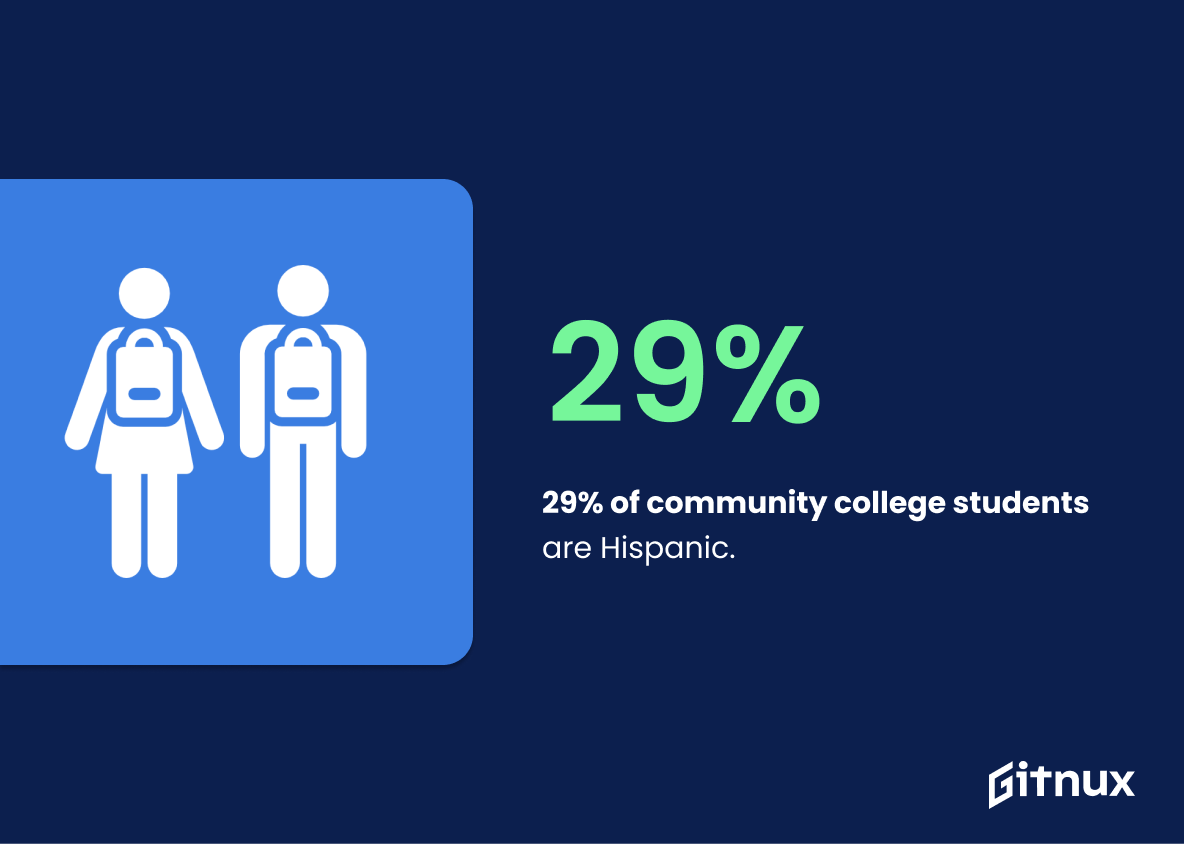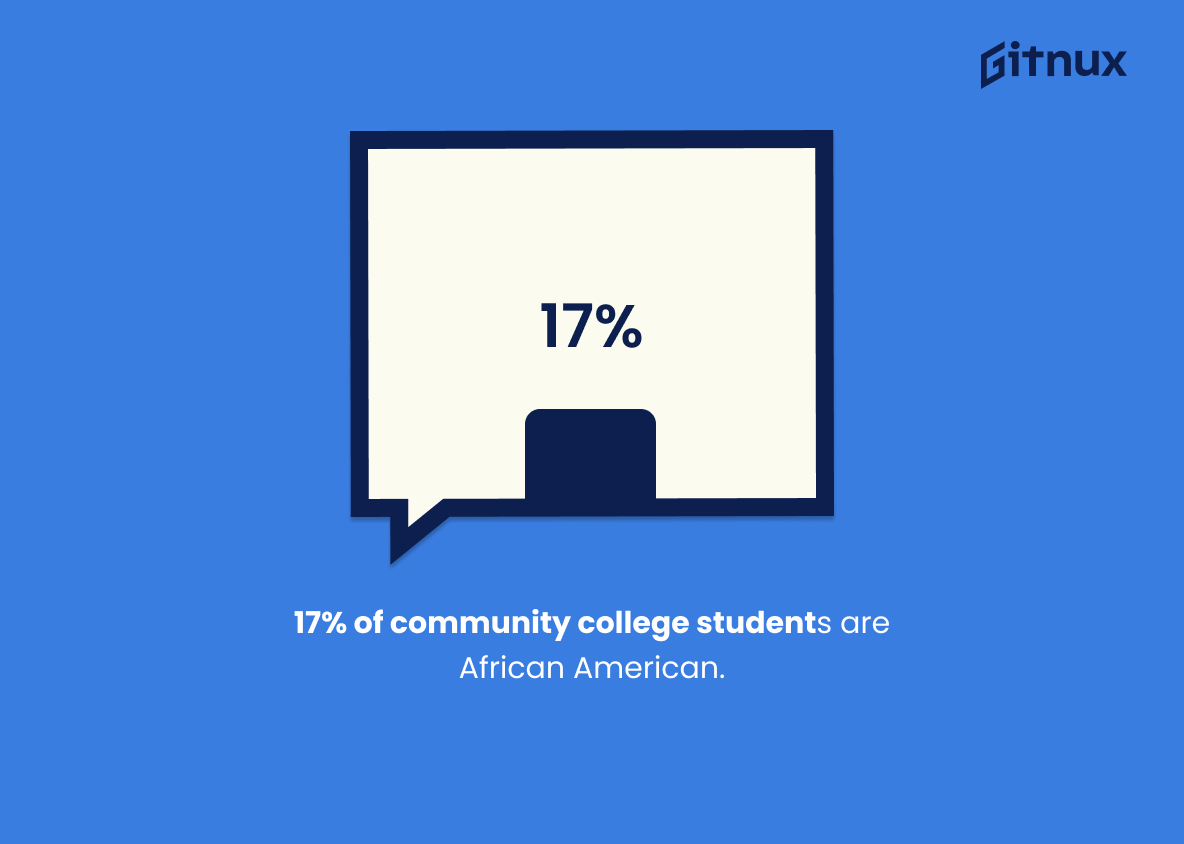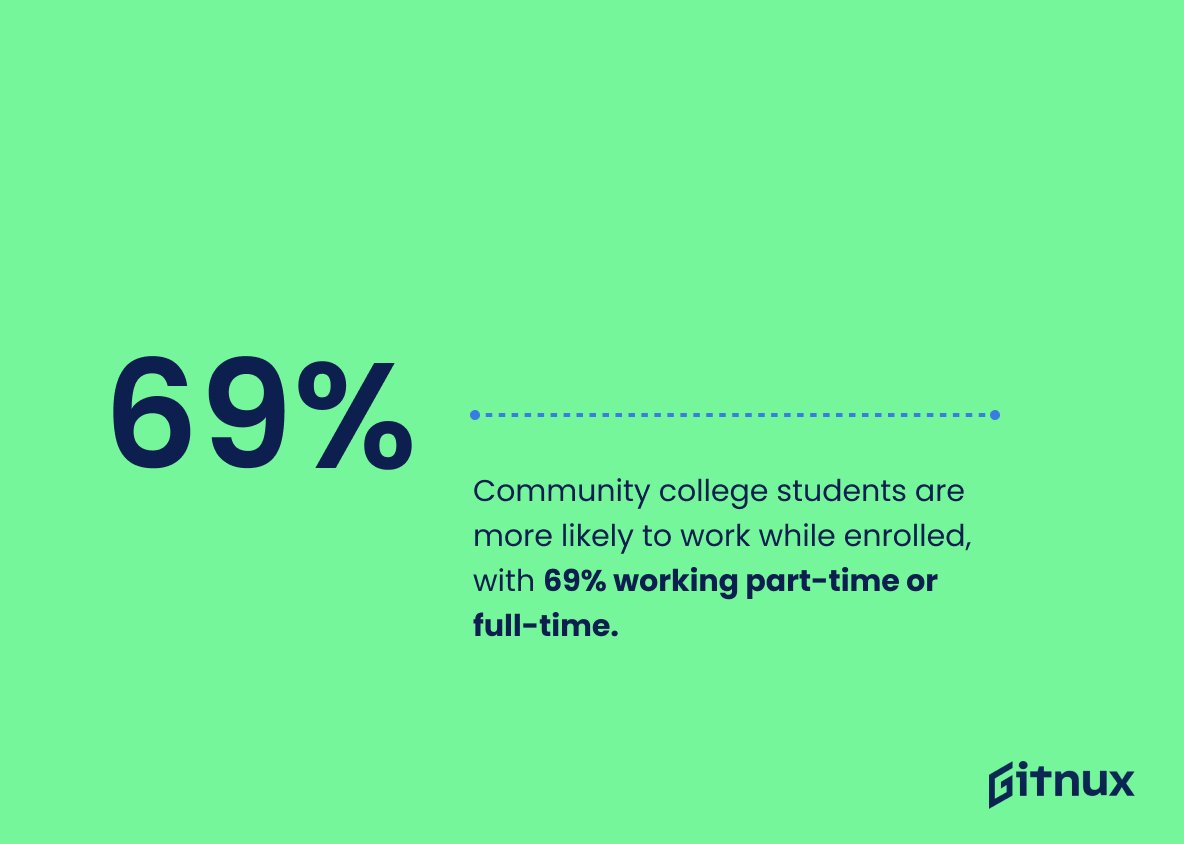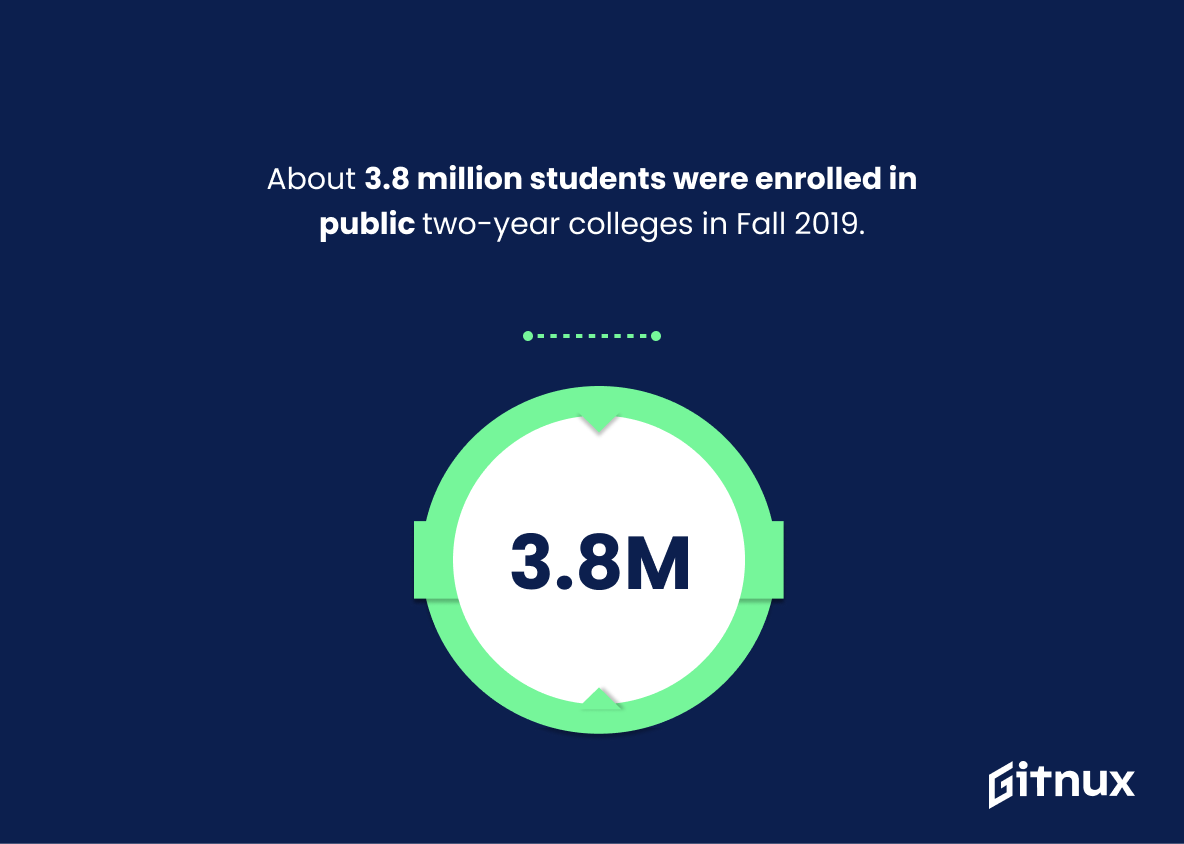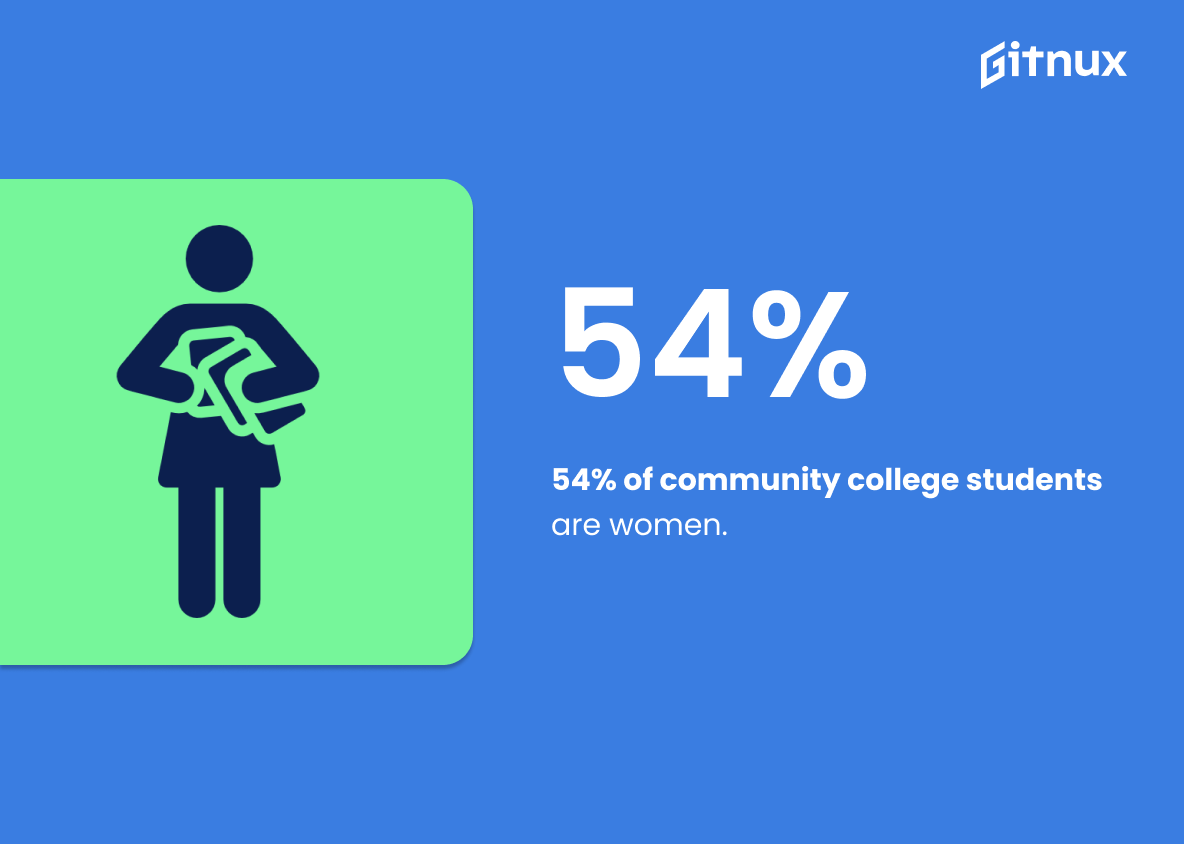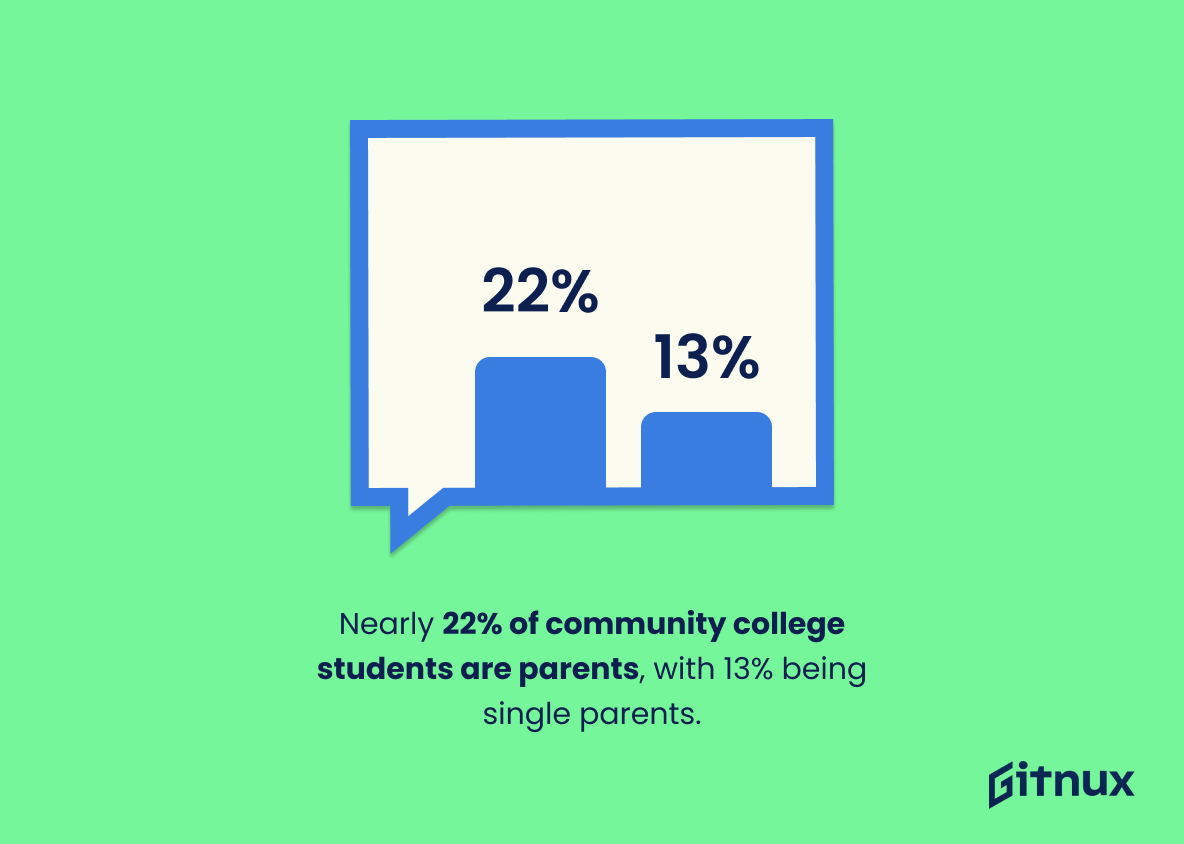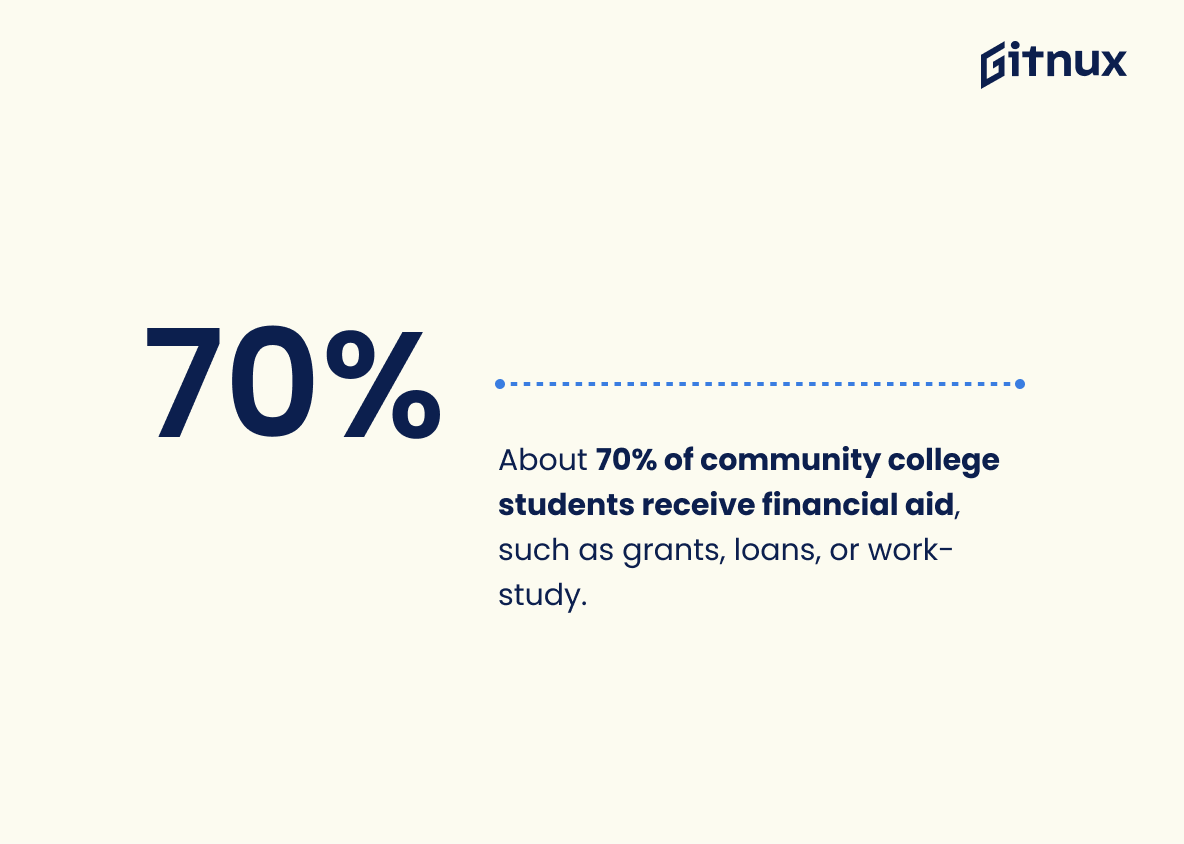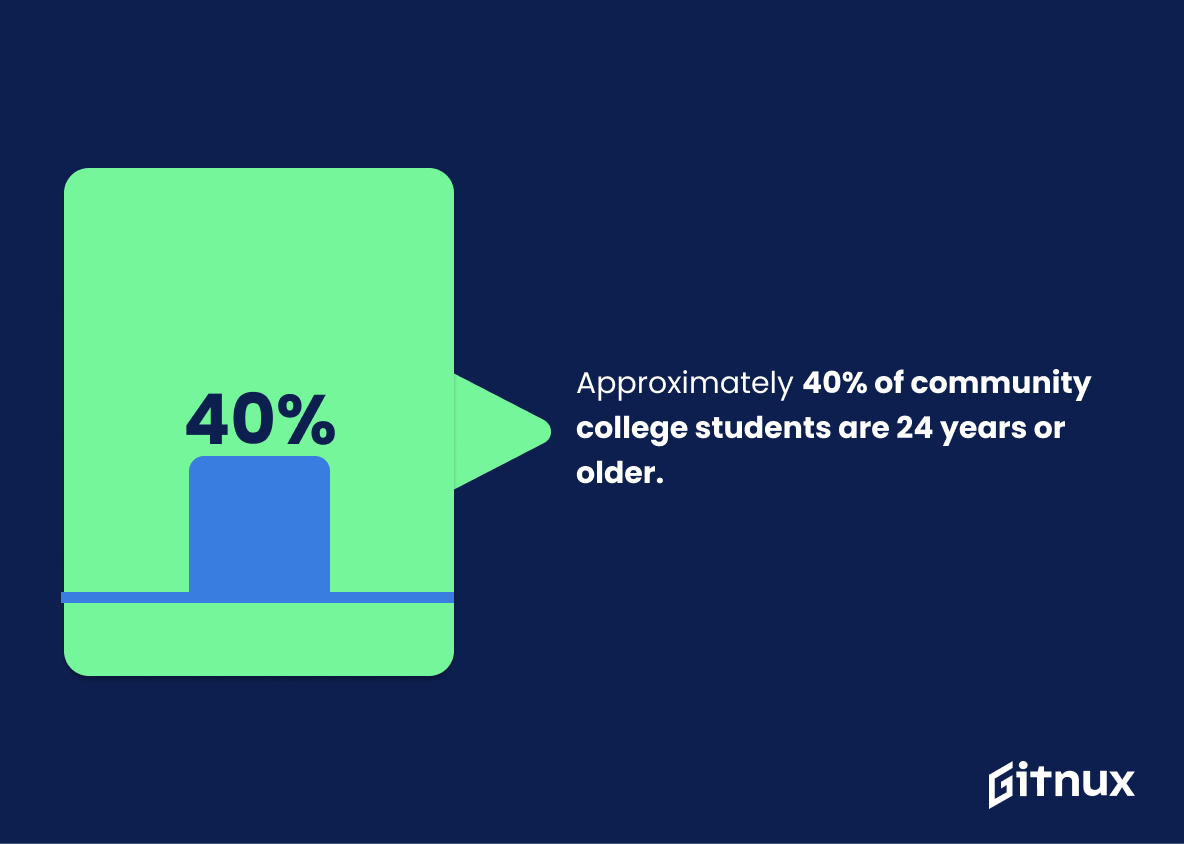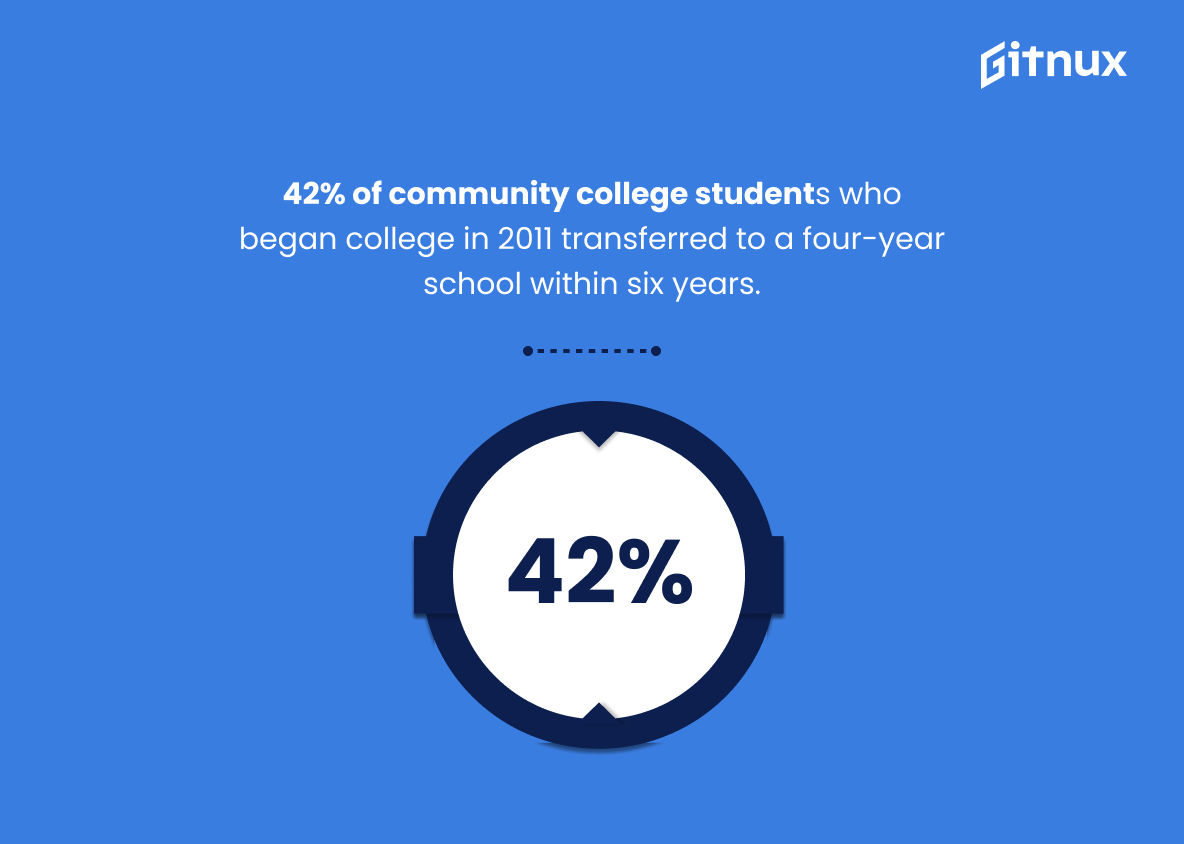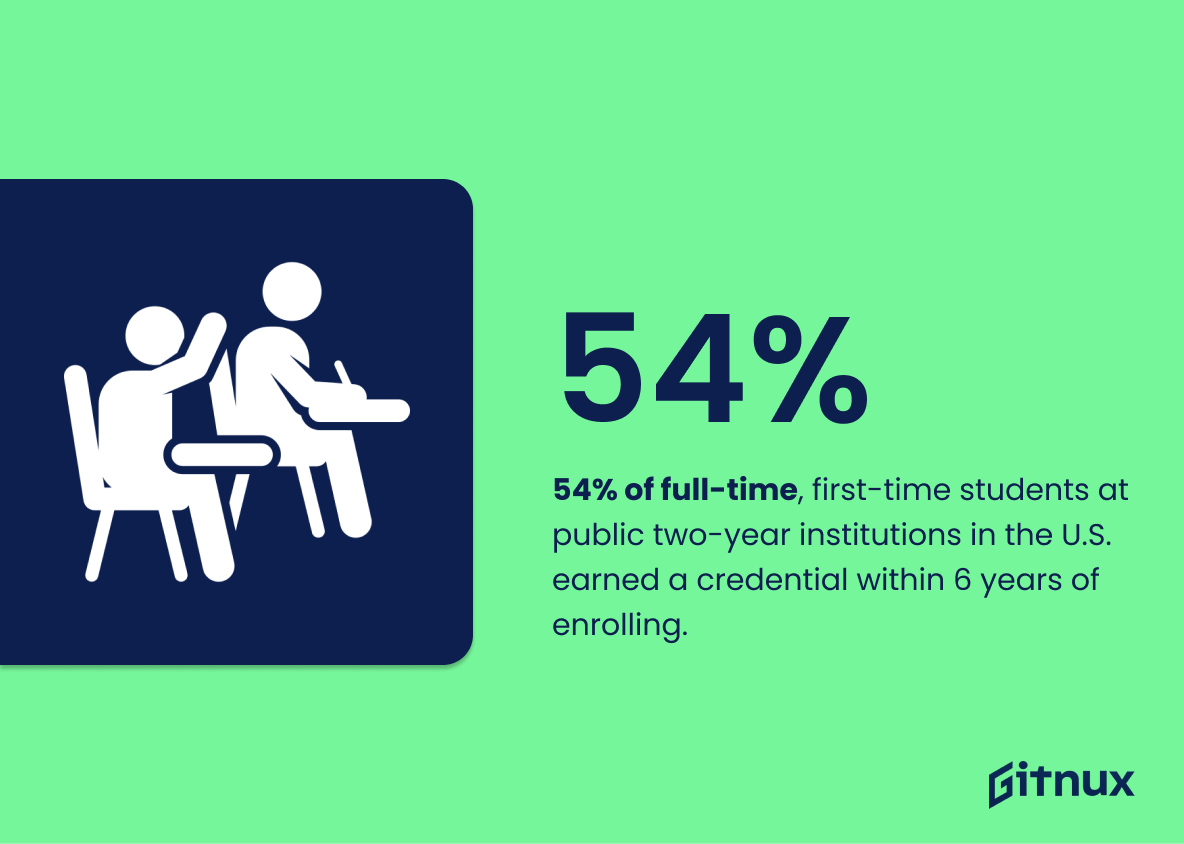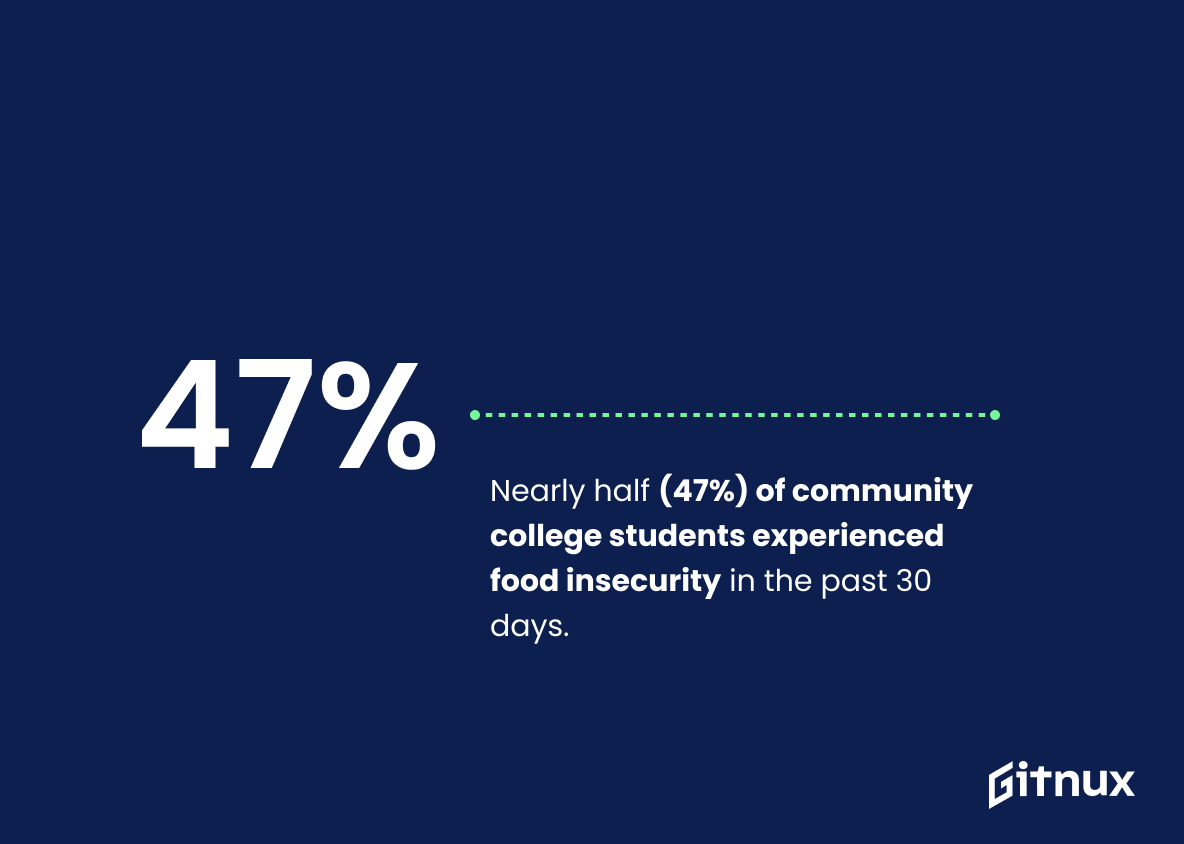Community college students are an integral part of the U.S. higher education system, yet their experiences and outcomes often go unrecognized or undervalued. This blog post will explore some key statistics about community college students in order to better understand who they are and how they fare compared to other undergraduate populations. We’ll look at data on enrollment rates, student loan debt levels, working while enrolled, tuition costs, disability status, gender identity/parental status and more. By understanding these facts and figures we can gain a greater appreciation for the unique challenges faced by community college students as well as recognize their successes in achieving educational goals despite those obstacles.
Community College Students Statistics Overview
29% of community college students are Hispanic.
This statistic is significant in the context of a blog post about Community College Students Statistics because it highlights the importance of recognizing the diversity of the student body. It is essential to understand the different backgrounds and experiences of the students in order to provide the best possible education and resources for them. By understanding the percentage of Hispanic students, we can better understand the needs of the student body and ensure that all students have access to the same opportunities.
17% of community college students are African American.
This statistic is significant in the context of a blog post about Community College Students Statistics because it highlights the importance of diversity in higher education. It demonstrates that African American students are making strides in their pursuit of higher education, and that community colleges are providing an accessible and affordable option for them to do so. Furthermore, this statistic serves as a reminder that there is still work to be done in order to ensure that all students have equal access to higher education.
Community college students are more likely to work while enrolled, with 69% working part-time or full-time.
This statistic is a powerful indicator of the dedication and determination of community college students. It speaks to the fact that these students are willing to go the extra mile to ensure their success, often taking on the additional burden of working while enrolled. This statistic is a testament to the hardworking nature of community college students and the commitment they have to their education.
The average annual tuition at public two-year institutions was $3,730 for in-district students in 2020-2021.
This statistic is a crucial piece of information for any blog post about Community College Students Statistics, as it provides insight into the cost of attending a public two-year institution. Knowing the average tuition cost can help students and their families make informed decisions about their educational future, as well as provide a benchmark for comparison when researching other schools.
About 3.8 million students were enrolled in public two-year colleges in Fall 2019.
This statistic is a powerful reminder of the sheer number of students who are currently enrolled in public two-year colleges. It speaks to the importance of community colleges in providing educational opportunities to a wide range of students, and the impact they have on the lives of those who attend them. It also serves as a reminder of the need to ensure that these students have access to the resources and support they need to succeed.
54% of community college students are women.
This statistic is significant in understanding the makeup of the community college student population. It highlights the fact that the majority of students attending community college are female, which can be used to inform decisions about how to best serve the needs of this demographic. Additionally, it can be used to identify potential areas of improvement in terms of gender equity in higher education.
Nearly 22% of community college students are parents, with 13% being single parents.
This statistic is a powerful reminder of the unique challenges faced by community college students who are also parents. It highlights the fact that many of these students are juggling the demands of parenting and college, often without the support of a partner. It is a testament to their resilience and determination to better their lives and the lives of their families.
70% of community college students receive some type of financial aid, including grants, loans, or work-study.
This statistic is a powerful indicator of the financial burden that community college students face. It speaks to the fact that the majority of students are relying on some form of financial assistance to help them pay for their education. This statistic is important to consider when discussing the challenges that community college students face, as it highlights the need for more accessible and affordable education options.
Approximately 40% of community college students are 24 years or older.
This statistic is a telling indication of the changing face of community college students. It shows that a significant portion of the student body is made up of adults who are returning to school to further their education or to gain new skills. This statistic is important to consider when discussing the various challenges and opportunities that community college students face.
42% of community college students who began college in 2011 transferred to a four-year school within six years.
This statistic is a testament to the success of community college students in achieving their educational goals. It shows that a significant portion of students who began their college journey at a community college were able to transfer to a four-year school within six years, demonstrating the value of community college as a stepping stone to higher education.
54% of full-time, first-time students at public two-year institutions in the U.S. earned a credential within 6 years of enrolling.
This statistic is a testament to the success of community college students in the U.S. It shows that a majority of full-time, first-time students at public two-year institutions are able to earn a credential within 6 years of enrolling, indicating that community college students are able to achieve their educational goals in a timely manner. This is an important statistic to highlight in a blog post about community college students, as it demonstrates the effectiveness of community college programs in helping students reach their academic goals.
60% of students who entered community college with the goal of earning a bachelor’s degree, achieved that goal within eight years.
This statistic is a testament to the success of community college students in achieving their educational goals. It shows that community college is an effective and viable option for those looking to pursue a bachelor’s degree, and that it can be done in a relatively short amount of time. This statistic is an encouraging sign for those considering community college, and it serves as a reminder that hard work and dedication can pay off.
Nearly half (47%) of community college students experienced food insecurity in the past 30 days.
This statistic is a stark reminder of the reality that many community college students face: food insecurity. It is a sobering reminder that for far too many students, the struggle to access basic necessities is a daily reality. This statistic highlights the need for increased support for community college students, both in terms of access to food and other resources.
Conclusion
Community college students are an integral part of the U.S. higher education system, with 41% of all undergraduates enrolled in community colleges and 62% attending part-time. Community college students come from diverse backgrounds; 36% are first-generation college students, 29% Hispanic, 17% African American, 54 % women and 15 % have some type of disability. Additionally, 69 % work while enrolled either full or part time due to the lower tuition costs at public two year institutions ($3 730 for in district student). Furthermore 3 8 million were enrolled in Fall 2019 which is a testament to their popularity as well as affordability compared to four year universities where graduates leave with $10 000 more debt on average than those graduating from community colleges . Finally , it’s encouraging that 60 percent who entered community college with the goal of earning a bachelor’s degree achieved this within eight years and nearly half (47%) experienced food insecurity in past 30 days despite 13 percent experiencing homelessness within one year .
References
0. – https://www.ccrc.tc.columbia.edu
1. – https://www.nces.ed.gov
2. – https://www.www.luminafoundation.org
3. – https://www.research.collegeboard.org
4. – https://www.www.harding.edu
